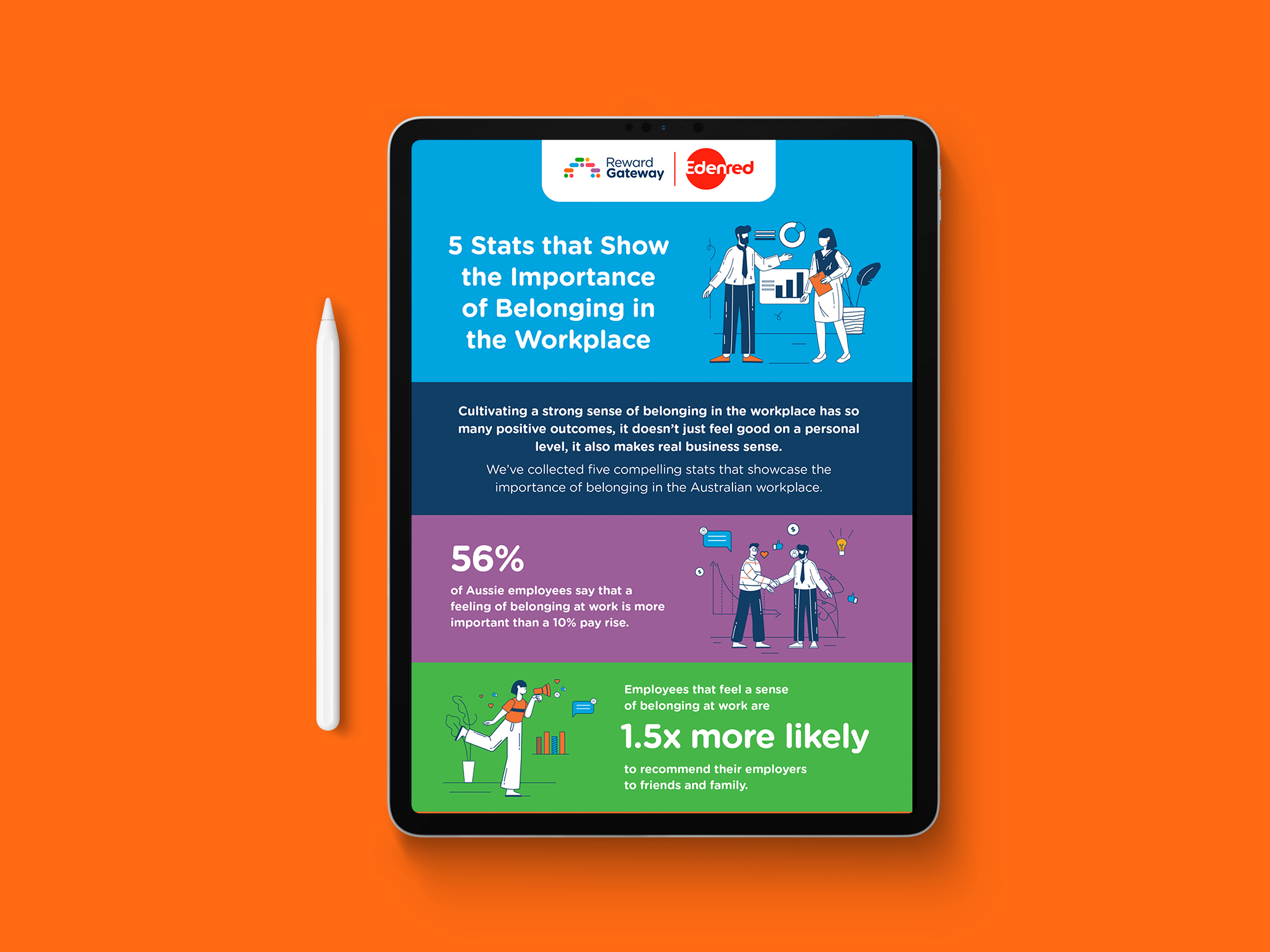When you’re juggling multiple priorities as a small business owner, it’s not uncommon for employee benefits to fall to the bottom of the priority pile. But what many small businesses don’t realise is that offering good employee benefits can boost profitability in the long term.
The advantages of employee benefits include improved morale, better work-life balance, and enhanced employee wellbeing. By getting the little things right, you’re in a better position to attract and retain the best talent. The best part is you don’t need to invest tons of budget to create an extravagant benefits package.
Choosing benefits that are relevant and genuinely useful for your employees matters more than offering expensive gym memberships, it’s all about finding balance. In this blog, we’ll explore the 6 dos and don’ts of employee benefits in small businesses.
Do: Make your benefits relevant
 With so many potential benefits to choose from, it can be difficult to know what’s best for your business. Select benefits and perks that are meaningful, and ask yourself, do they align with your company values? For example, if you’re a not-for-profit on a mission to make the world a better place, you could offer extra paid time off for people to volunteer for causes close to their heart.
With so many potential benefits to choose from, it can be difficult to know what’s best for your business. Select benefits and perks that are meaningful, and ask yourself, do they align with your company values? For example, if you’re a not-for-profit on a mission to make the world a better place, you could offer extra paid time off for people to volunteer for causes close to their heart.
If you’re not sure where to start, ask your employees. They chose you for a reason, right? Create a survey and ask for their advice on what benefits would motivate them the most or to get feedback on your existing benefits plan. You might also wish to do some competitor analysis, to understand what other companies in your industry are offering as standard and how you could go one step further.
Don’t: Overcomplicate your offering
While it can be exciting to come up with a lot of new ideas, it’s equally important to ensure that you don’t overcomplicate your offering. Any benefits you put in place should be easy to understand, easy to use and easy to access. You’re creating something that is designed to benefit employees, so you want to make sure that everybody is comfortable signing up and claiming their benefits. It can also be useful to create a one-pager explaining what the benefits are for people to refer to if needed.

While taking inspiration from other companies and the benefits they offer can be helpful in outlining your benefits package, don’t feel pressured into piling on lots of extras that aren’t relevant or necessary. Choose the benefits that are right for both your people and your budget – it’s better to have three or four excellent benefits that people will make use of!
Do: Be creative with your perks
While your benefits budget may be quite modest as a small business, it’s very possible to be creative with what you have available! There are plenty of perks that can be rolled out without costing the earth, such as free food, interest-based social groups, offering discount and cashback programs through platforms like Reward Gateway for Small Business, and building flexible working into your business.
Also, consider benefits that reflect what makes your organisation and your people special. Whether that’s creating an exciting new benefit, like giving employees a day off when it’s their child’s first day of school, or delivering a treat hamper for a new four-legged addition to the family. The (employee benefits) world is your oyster!

Don’t: Do the bare minimum
If you want to stand out from the competition, you need to make sure that your benefits are above and beyond what is required by law. For example, stating that your employees get a certain number of days off including Australian holidays is not a perk, since they’d get a day off anyway. But offering an employee an extra day off on their birthday definitely is.
Similarly, while you might not be able to compete on salary with the big hitters in your industry, it’s possible to provide a sense of financial wellbeing for your employees through employee benefits. This can help their money go further and increase their sense of satisfaction.
Do: Take advantage of digital platforms
According to a report by Deloitte, 68% of employees prefer to access their benefits via digital tools. Platforms such as Reward Gateway for Small Business conveniently host a range of employee benefits in one place, from the Wellbeing Centre packed full of on-demand videos and articles focussed on mental health, physical wellbeing and financial education, to the Recognition Wall where employees can publicly send eCards and acknowledge good work.
You can also use technology to stay connected with your employees. Share reminders about benefit deadlines and new perks via email, raise awareness of various employee programs via social media pages or your intranet, and choose a benefits platform that can make their benefits available anywhere, any time, on any device of their choosing.
Don’t: Keep quiet!
 Most of all, it’s easy to forget all the fantastic benefits you offer when everybody is busy working hard. You could be offering the most amazing benefits package in the world, but if nobody knows they exist, you might as well save your budget. Find ways to regularly communicate what you offer, beyond reminding people of deadlines.
Most of all, it’s easy to forget all the fantastic benefits you offer when everybody is busy working hard. You could be offering the most amazing benefits package in the world, but if nobody knows they exist, you might as well save your budget. Find ways to regularly communicate what you offer, beyond reminding people of deadlines.
For example, you could tie specific benefits into key moments in the social calendar, such as promoting your mindfulness and wellbeing resources on mental health awareness days. When the clocks go forward, you could encourage people to take advantage of the extra daylight by promoting outdoor workout videos.
Key takeaways
So, how can you ensure your employee benefits are right for your small business? Let’s recap on the dos and don’ts of employee benefits.
DO
- Make your benefits relevant
- Be creative with your perks
- Take advantage of digital platforms
DON'T
- Overcomplicate your offering
- Do the bare minimum
- Keep quiet!
We are obsessed with our mission to make the world a better place to work. Sign up for a free trial of Reward Gateway for Small Business and let us help you motivate and reward your workforce.
 Billy Enever
Billy Enever



